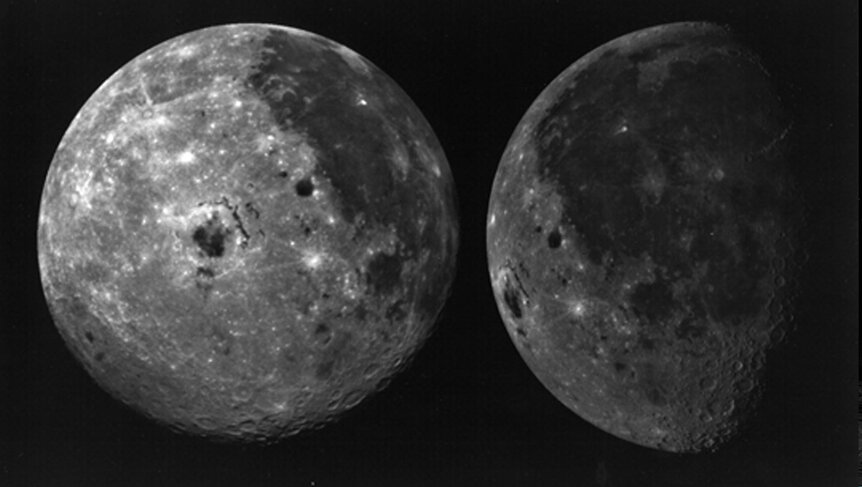Create a free profile to get unlimited access to exclusive videos, sweepstakes, and more!
Pew! Pew! NASA is going to zap laser beams into the Moon’s darkest craters to see what it can find

What is really lurking on the dark side of the moon? It could be something invaluable to us. When the first manned Artemis mission to the Moon takes off in 2024 (though delays could emerge with the pandemic), the one thing it can’t bring with it from the home planet is water.
Something that heavy and expensive isn’t worth it — especially when it can be found on the Moon. The dark side of the moon may be cold and forbidding, but it could also be an untapped treasure trove of water ice. This is why NASA is sending over a Cubesat equipped with a laser, otherwise known as its Lunar Flashlight mission, to find out.
“Water ice and other volatile compounds may be present on the Moon within permanently shadowed regions (PSRs) near the lunar poles,” a team of NASA scientists said in a study on Lunar Flashlight recently published in IEEE Aerospace and Electronic Systems. “Understanding the composition, quantity, distribution and form of water and other volatiles associated with lunar PSRs is identified as a Strategic Knowledge Gap (SKG) for NASA’s human exploration program.”
The thing about ice on the Moon is, even though we already have an idea of where to find it from the results transmitted back to Earth by unmanned missions, we have to be absolutely certain it actually exists. Rovers and landers crawling over the surface don’t need a steady supply of it to survive. Sending humans over there, however, is going to mean that we’ve got to be absolutely sure the Moon can provide.
Lunar Flashlight is about the size of a briefcase, except this mighty mini spacecraft developed by NASA’s Jet Propulsion Lab (JPL) will use its built-in spectrometers and near-infrared lasers to seek out ice in craters around the Moon’s south pole. That region of the Moon exists in permanent shadow because it is tidally locked with Earth. Because it is held in place by Earth’s gravitational forces and doesn’t rotate as it orbits, there will forever be that one side that sees sunlight while the other is banished to the shadows.
This will be the first NASA mission ever to use a laser reflectometer, which is exactly what it sounds like; it measures how reflective a surface is. Water ice will end up revealing itself when the light beam shines on it. Flashlight will also be the first mission to use a green propellant developed to be far less toxic than the usual hydrazine. You’d rather not go with something highly corrosive to human skin that releases toxic nitrogen oxides as it burns.
Lunar Flashlight will hover over the lunar south pole for two months in search of water ice that may be hiding in dark craters known as “cold traps.” The quad of lasers in Flashlight’s reflectometer will beam near-infrared wavelengths that, while invisible to the naked eye, are easily absorbed by ice. That light will just bounce back to the spacecraft and signal a no-ice zone if it hits bare rock. However, if it gets absorbed, that means Flashlight has hit frozen water that is not just drinkable, but can also be broken down to produce breathable oxygen and hydrogen for fuel.
Too bad the lasers can’t detect ice that might still lie beneath the Moon’s surface, though other spacecraft (like VIPER) and astronauts will probe for it. At least Flashlight will shine a light on whether enough water is waiting for us on the lunar surface when we finally do land.



























